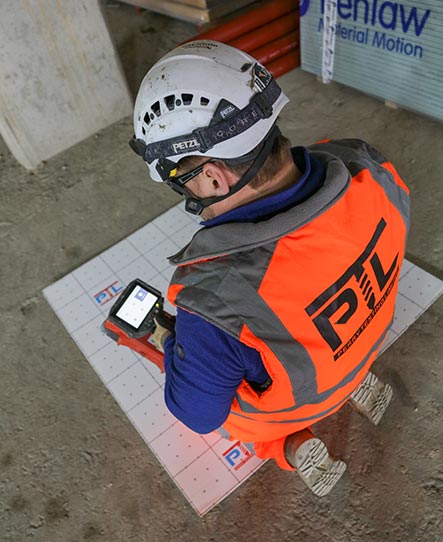Concrete Scanning: A Vital Step Towards Making Sure Architectural Stability and Security
In the realm of building and construction and framework upkeep, the value of concrete scanning can not be overstated. By using sophisticated innovation and methodologies, concrete scanning offers as a critical device in ensuring that the honesty and security of bridges and buildings are supported to the highest possible requirements.
Relevance of Concrete Scanning
Concrete scanning plays a crucial duty in making sure the architectural integrity and safety and security of buildings and infrastructure projects. By utilizing innovative technologies such as ground-penetrating radar (GPR) and electro-magnetic induction, specialists can non-destructively examine concrete frameworks to detect prospective defects, gaps, ingrained objects, and support layout. This procedure allows early detection of abnormalities that might jeopardize the stability of a framework, protecting against costly damages and making certain the safety of passengers.
Concrete scanning is particularly important during the preparation and building and construction phases of a job. Prior to exploration, cutting, or coring into concrete, scanning aids recognize the accurate places of rebar, post-tension wires, and various other ingrained elements, minimizing the threat of unintended hits that can result in structural weaknesses. Furthermore, concrete scanning aids in top quality control by validating the density of concrete covers and detecting any discrepancies that may impact the general sturdiness of the structure. Eventually, spending in concrete scanning services is not only a proactive measure to reduce risks but also a fundamental action in the direction of keeping the long-lasting security and stability of structures and facilities.
Modern Technology for Concrete Examination

Advantages of Early Detection
Timely discovery of architectural problems can considerably alleviate dangers and make certain the longevity of construction jobs. By identifying potential problems early in the building and construction process, stakeholders website here can take proactive Homepage steps to deal with problems prior to they rise right into bigger and extra pricey troubles. One of the key benefits of early discovery is the avoidance of structural failures, which can pose serious safety hazards and result in task hold-ups and monetary losses.
Furthermore, early detection permits prompt fixings and upkeep, which can help prolong the life-span of the framework. By attending to problems quickly, construction teams can avoid pricey repair services and even the requirement for premature replacement of architectural elements. This proactive approach not only conserves money and time yet likewise boosts the overall safety and security and sturdiness of the building project.
Furthermore, early detection can boost job preparation and decision-making by giving stakeholders with beneficial understandings into the problem of the structure. Equipped with this info, project supervisors can make educated selections relating to building and construction materials, timelines, and methods, causing more efficient and successful task outcomes.
Making Certain Structural Security
Guaranteeing the architectural stability of a building and construction job is read paramount to its safety and durability. Architectural stability describes the ability of a building or framework to maintain its form and feature under environmental conditions and numerous loads. To accomplish this, comprehensive evaluation and tracking of the framework are important. Concrete scanning plays a critical role in guaranteeing structural security by detecting prospective problems such as gaps, delamination, or support corrosion that might compromise the integrity of the structure with time.
By using sophisticated scanning innovations like ground-penetrating radar (GPR) and electromagnetic induction, building specialists can non-invasively evaluate concrete frameworks to determine areas of issue underneath the surface area. This positive technique enables for the early detection of problems or weaknesses, making it possible for timely fixings or reinforcement to avoid structural failures.
Normal concrete scanning during various building and construction stages and throughout the life cycle of a structure can aid keep its security, reduce risks, and make certain the safety and security of passengers. By focusing on structural security with concrete scanning, construction tasks can boost their durability and toughness, eventually adding to greater safety and long life.

Stopping Crucial Failings
Applying routine examinations, such as concrete scanning, can expose concealed defects like voids, fractures, or rust that might jeopardize the honesty of a framework. By utilizing advanced scanning technologies like Ground Permeating Radar (GPR) or Concrete X-ray, designers can non-destructively analyze the problem of concrete and recognize weak points that call for support or fixing.

Final Thought
Finally, concrete scanning plays a critical role in making sure architectural stability and security by using sophisticated technology for early detection of prospective problems. This positive method aids prevent essential failings and makes certain the security of frameworks. It is important to prioritize concrete inspection as a basic practice to protect the longevity and safety of structures and framework.
Concrete scanning plays a critical duty in making certain the architectural stability and safety of structures and facilities jobs. Furthermore, concrete scanning aids in quality control by validating the density of concrete covers and finding any type of disparities that might impact the overall durability of the framework. Concrete scanning plays an important duty in making sure structural security by discovering potential problems such as spaces, delamination, or reinforcement deterioration that might compromise the stability of the structure over time.

In verdict, concrete scanning plays a crucial role in guaranteeing structural stability and security by using sophisticated innovation for early detection of prospective problems.